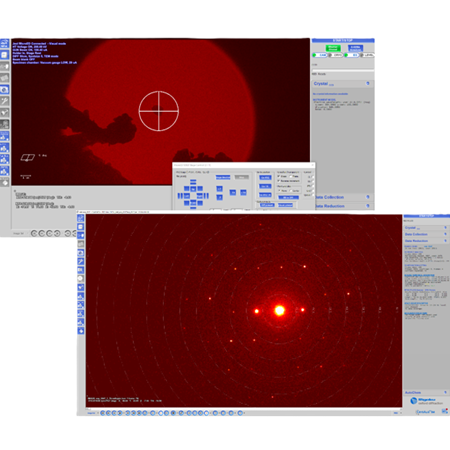Electron Diffraction
In the electron diffraction (single crystal structure analysis) method, the sample is irradiated with an electron beam, and the resulting electron diffraction data is used to analyze the three-dimensional arrangement of atoms and molecules within the single crystal, as well as the intermolecular interactions. Furthermore, because the final result directly reflects the molecular structure itself, this method becomes a very powerful tool for analyzing complex molecular structures that are difficult to analyze using other structural analysis methods.
In general, single crystal structure analysis is performed using X-ray measurements. However, to obtain sufficient measurement data, it is necessary to create a single crystal sample with a size ranging from tens of micrometers to hundreds of micrometers. In practice, however, growing a large single crystal is very difficult and requires the careful consideration of many factors. This has been a significant barrier in traditional X-ray-based measurements.
On the other hand, when using electron beams for measurement, the interaction of electrons with matter is several thousand to several tens of thousands of times stronger than that of X-rays, and electrons can be focused more finely than X-rays. This allows for the measurement of extremely small samples. Because of this characteristic, by using the electron diffraction method, structural analysis can be conducted on tiny samples that could not be measured by traditional X-ray diffraction methods, playing a crucial role in various fields such as material development, new drug design, and nanomaterial structure evaluation.

Rigaku recommends the following products

Contact Us
Whether you're interested in getting a quote, want a demo, need technical support, or simply have a question, we're here to help.
